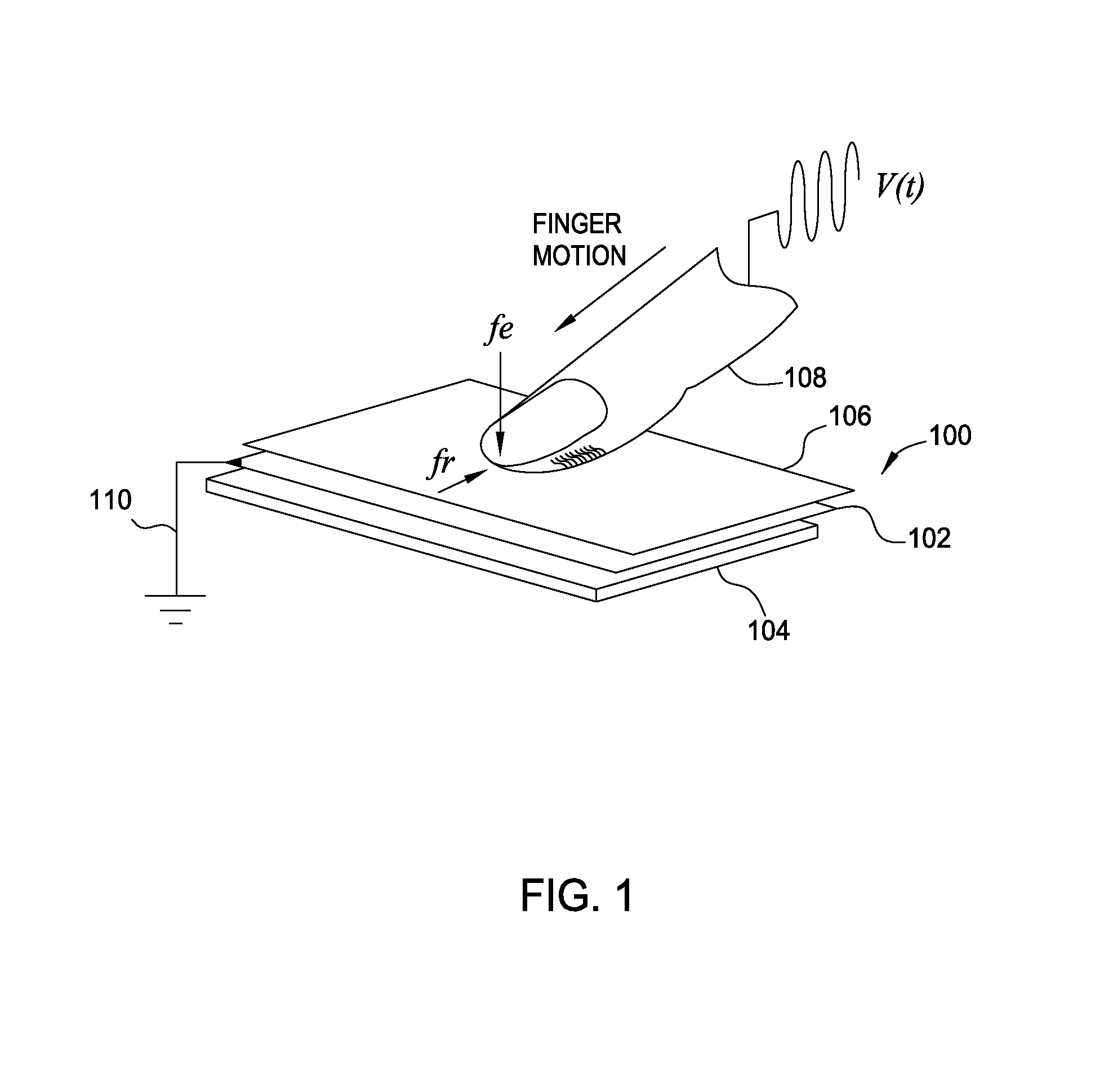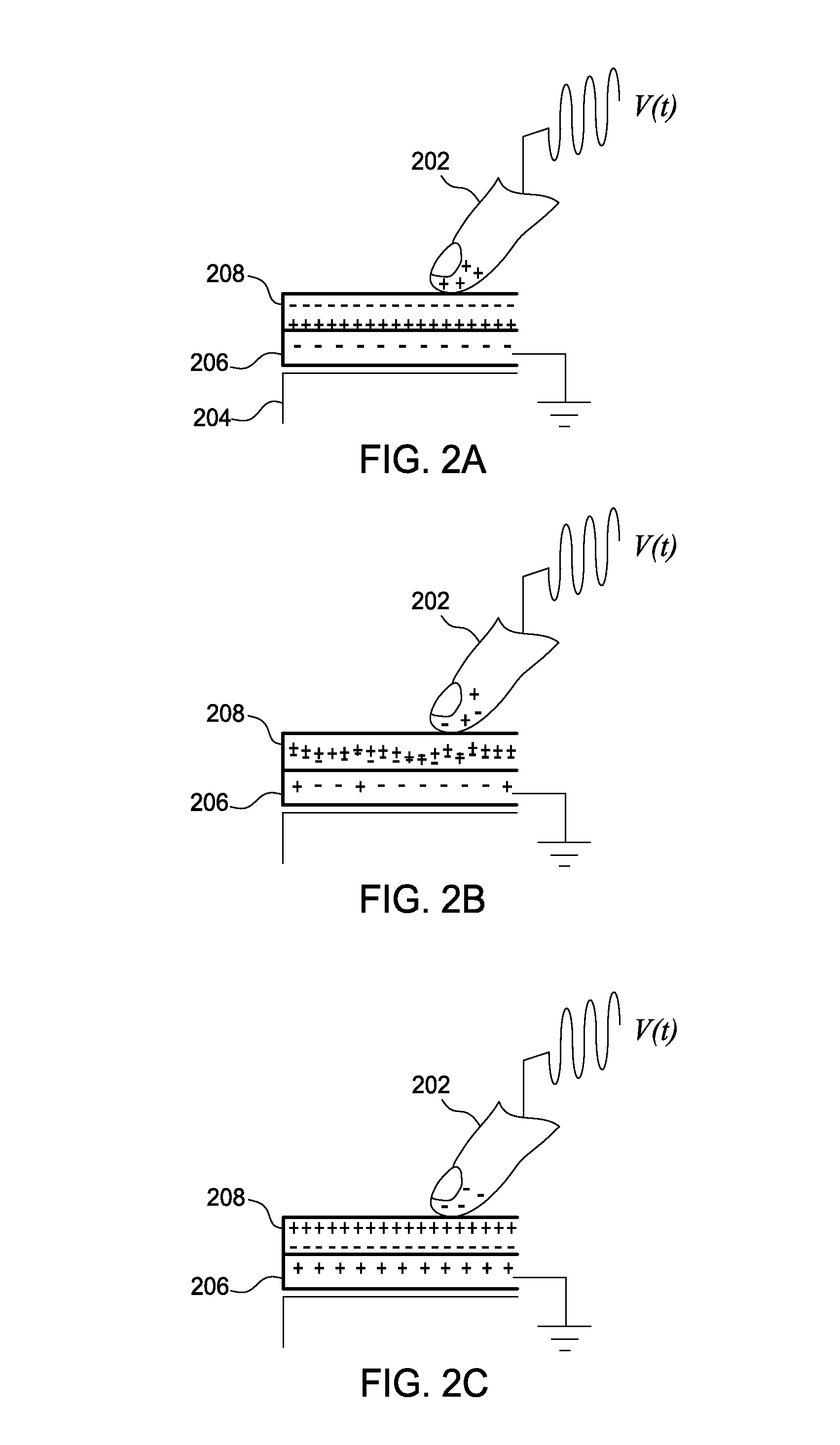Controlling a user's tactile perception in a dynamic physical environment
a dynamic physical environment and tactile feedback technology, applied in the field of tactile feedback, can solve the problems of reducing the realism of visual environments, reducing interface efficiency, and lack of dynamic tactile feedback
- Summary
- Abstract
- Description
- Claims
- Application Information
AI Technical Summary
Benefits of technology
Problems solved by technology
Method used
Image
Examples
Embodiment Construction
[0030]An electrical tactile signal uses an electrical path that includes a signal generator, a user's body, and an object to generate a particular tactile sensation that is felt by the user. Specifically, the signal generator introduces the tactile signal into the user which causes an electrovibration at a point where the user contacts the object. The user perceives this electrovibration as a particular tactile sensation—e.g., waxy, smooth, rough, sticky, etc. However, the electrical path includes various impedances (e.g., the impedance between the signal generator and ground, the impedance of the user's body, or the impedance between the object and ground) which affect the amplitude of the tactile signal. If the net impedance of the electrical path changes, then the amplitude of the tactile signal, and thus, the tactile sensation also change. For example, if the user touches a different object which has a different associated impedance, even if the signal generator uses the same se...
PUM
 Login to View More
Login to View More Abstract
Description
Claims
Application Information
 Login to View More
Login to View More - R&D
- Intellectual Property
- Life Sciences
- Materials
- Tech Scout
- Unparalleled Data Quality
- Higher Quality Content
- 60% Fewer Hallucinations
Browse by: Latest US Patents, China's latest patents, Technical Efficacy Thesaurus, Application Domain, Technology Topic, Popular Technical Reports.
© 2025 PatSnap. All rights reserved.Legal|Privacy policy|Modern Slavery Act Transparency Statement|Sitemap|About US| Contact US: help@patsnap.com



